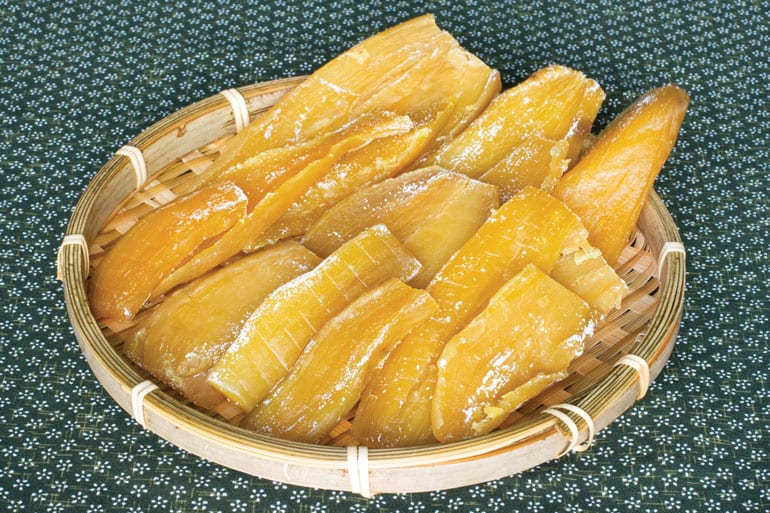
Satsuma imo (Japanese sweet potato) tastes very different from the variety of sweet potato found in Singapore. With its high water content, satsuma imo is very sweet, with a smooth and creamy texture when cooked in simmered dishes or as tempura, or simply roasted.
Satsuma imo is also used in traditional Japanese confections, such as hoshi imo, or dried sweet potato. The Japanese have long loved to eat hoshi imo. Some experts say that the practice of drying sweet potatoes first started in the 18th century and grew in popularity during the Japan-Russo War of the early 20th century, when soldiers would eat it as a snack.
Ibaraki prefecture, northeast of Tokyo along the Pacific coast, is by far the largest producer of hoshi imo in the country today. Ibaraki produces about 80 per cent of dried sweet potato, which are then sent all across the country. Its cold, dry climate and fertile soil help to produce some of the best satsuma imo for drying in Japan.
Making hoshi imo is simple yet time-consuming, and does not require any chemicals. Harvested satsuma imo is first steamed, peeled and sliced, then sundried for about a week during the colder months. Like hoshigaki or dried persimmons, hoshi imo is ready when the sugars from within come to the surface like a white dusting.
Nibble on a long, thin slice of hoshi imo, and you will find a sticky, slightly chewy texture similar to dried mango, with a chestnut-like aroma and a sweet, intense flavour. Dried sweet potatoes are also nutritious as they have no cholesterol, and are rich in vitamins B2, C and E, potassium, and dietary fibre.
In Japan, you can buy many kinds of hoshi imo, although the most popular is the simple, sliced variety. Many supermarkets and convenience stores sell them. You can eat hoshi imo on its own as a tasty, nutritious snack. It goes perfectly with a cup of great tea too. Some Japanese also enjoy toasting or grilling hoshi imo before serving to bring out its sweet potato flavour. It’s enough to make you want to eat hoshi imo over and over again!